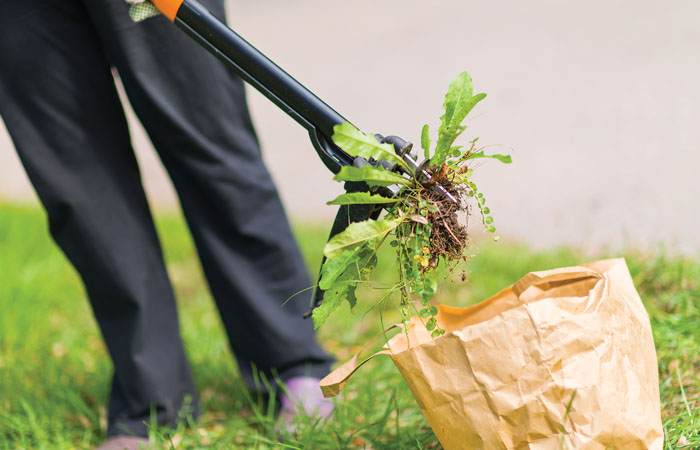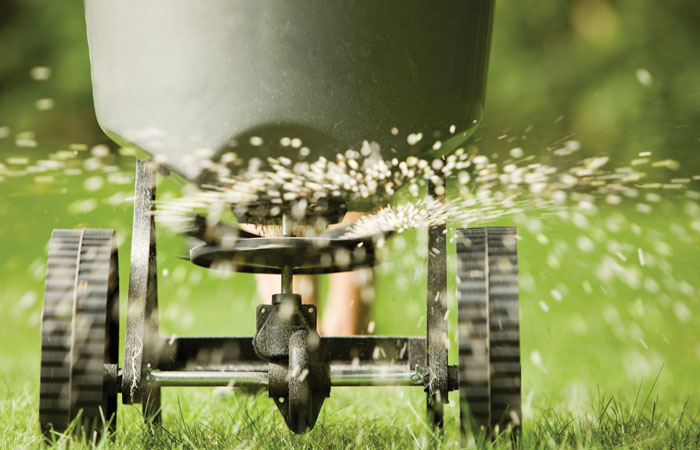Happy New Year, avid golfers!
January is often a cold and transition month for all of us who maintain golf courses and green spaces. However, one thing that jumps out this time of year (did you set any personal goals or resolutions?) is that we are setting goals, planning the work and aligning the budgets to the work for the upcoming season. If we fail to plan, as they say, we are planning to fail. Golf course superintendents, as proven financial and environmental managers, have developed some very unique processes that can apply easily to your personal situations. So, in that spirit and building on last year’s original work, this month’s Ask the Superintendent question covers how to set GREEN goals and build a plan for your lawn and garden success in 2024, with a bonus LINKED goal section.
We are going to cover a lot of things, but first we need a basic understanding of goal setting. You are probably familiar with the SMART method of goal setting; SMART is an acronym for the basic steps for successful goal setting. They are S – Specific, M – Measurable, A – Attainable, R – Realistic and T – Timed (has a deadline). These are proven ways to guide your goal-setting success and provide an excellent foundation.
But there is another method used by some of the most accomplished green industry professionals that you might not be familiar with but could certainly add to your list of garden tools. You need to establish GREEN goals for your lawn and garden success. Whether you manage a micro green space or a 400+ acre world-famous green space, this strategy can take you from good to great. GREEN is an acronym for G – Generational, R – Relevant, E – Easy to Start, E – Environomic and N – Networkable. I have used GREEN goal setting throughout my career at some amazing golf properties, but I have used it just as effectively in residential and community applications. If you are ready to take your gardening and lawn care to the next level, then let’s take a look at how you can use GREEN goal setting to move your personal green assets from good to great!

First, GREEN goals should be (G) Generational. They should have a connection beyond the present day. For example, plant an Heirloom tree, grapevine, fig tree or design a garden/landscape with a 20-year plan that is designed to be passed on to the next generation. This first step in establishing a GREEN goal should make you think in a larger multi-dimensional way.
GREEN goals should be (R) Relevant. In today’s world, with everything from the pandemic to the economy to consider, relevance is more important than ever. The one thing I have seen a huge increase in that fits this area so well is the increase in home or micro gardening. Growing your own food ensures quality and availability. You may even start a seed bank to make sure that you have seeds for next year and the seeds will be genetically matched to plants that performed well last year.
GREEN goals should be (E) Easy to start. The problem with most goals or New Year’s resolutions is that while we often intend to do them, they seldom get off the ground, much less sustained, so it is important that a GREEN goal be easy to start and progress smoothly.
You must reverse engineer the project or process to find logical and easy-to-start first steps that can align to craft synergy as the process goes forward. Using our home garden as a muse, step one might be to do one hour of research on successful home gardening. Then evaluate your site with those criteria to establish placement and size. Then move to acquiring the necessary tools and materials to prepare the area (in ground or raised beds, for instance), and lastly gather plants and seeds for the actual planting. Followed by a heavy dose of maintenance, which of course leads to a tasty harvest. Remember to get to the harvest, the whole process must be easy to start and flow logically. The journey of 1,000 miles begins with a single step.
GREEN goals should be (E) Environomic. What is Environomics, you may ask? This is a term that I coined back in the early 1980s that simply means that you blend your environmental plans into your financial plans to create synergy in both. GREEN goals should certainly contain a heavy dose of environomics, for example, starting that home garden and building a great backyard space for entertaining at home can improve your green footprint and also save you money on food and reduce the number of times you eat out or travel. Thus, it is good for the environment and makes economic sense, as well. You should be able to quantify a Return on Investment with these GREEN projects/goals.
GREEN goals should be (N) Networkable. This is sometimes hard for the introverted, but to truly maximize the GREEN goal process you should make sure that your goals and projects are networkable. You should be able to share results and data with other gardeners or the community (perhaps social media). You could even, depending on the size and scope of your projects, generate GREEN public relations, having your work featured in newspapers or garden/environmental publications.
Beyond SMART and GREEN goals and their impact exists the synergy of LINKED goals. LINKED goals link similar goals together by taking reverse engineering steps to craft powerful sub-goals that creatively connect where you aspire to be to where you are now. You can actually accomplish huge life/professional goals and navigate a sea of goals as long as you keep a study heading by identifying those sub-goals and connections that are critical to the larger goal/success. Writing a time horizon can help with the clarity of this process.

A golf industry example, if you want to eventually be a golf course superintendent (the big goal) and you are currently a turf student (early in the journey of reaching the big goal), your time horizon should start with you as a turf student (current) and have benchmarks (next logical events and sub-goals) that includes things like complete an internship at Augusta National, volunteer at a PGA TOUR event, graduate turf school, get a job as a greenskeeper, get a job as a second assistant/spray technician at a private club, move into an assistant golf course superintendent position and ending at the linked goal of becoming the head golf course superintendent. Be detailed, be flexible but, most importantly, stay committed to your goal and its processes on a daily basis. The more creative your benchmarks are, the more synergy you can expect from the process.
Now that you have an overview, review the LINKED acronym below.
L–Legendary (milestone personal/professional achievements)
I–Innovative (outside the box, NEO)
N–Navigable (many ways to reach the destination)
K–Kinetic (relating to or resulting from motion or activity)
E–Edifying (strengthens others)
D–Destined (divinely guided)
The LINKED process can lead to extraordinary results. Here is a personal example explaining the LINKED goal process in detail. My linked goal was to win the Golf Course Superintendents Association of America (GCSAA) Presidents Award for Environmental Stewardship (PAES).
Following the acronym, it looks like this:
L–Legendary. Winning the PAES, which is the GCSAA’s highest environmental honor, is considered a career/life achievement award, so it is certainly legendary.
I–Innovative. My plan was to be innovative through case studies, certifications and outreach, my water and IPM case studies led to my first book deal, The Environmental Stewardship Toolkit, John Wiley and Sons 2012 (available on Amazon.com), and that’s where GREEN and LINKED goals debuted. So, again, it was pretty innovative.
N–Navigable. In the beginning, I thought the path was clear that I would be at my original property when eventually I reached the link goal, but because I had multiple strategies if needed, I made a bold move and took a tour of duty at a second multi-course property to complete the task and improve my skills. This led to the corporate agronomist role that I am in currently, proving the goal was indeed navigable.
K–Kinetic. The motion required was epic and connected me to many people and programs such as the Turf and Ornamental Communicators Association (TOCA), Audubon International, E-Par, GEO and many GCSAA staff (including green expert Mark Johnson), to name a few, so it was definitely Kinetic and resulted in other awards and lessons along the way that were epic in their own right.
E–Edifying. It is hard to say just how many people were impacted by this epic goal. I have taught thousands of amazing people in classes, plus many more through books and articles, and dozens of my staff have gone on to be superintendents or manage their own green businesses. Humbly, we all made each other better, stronger.
D–Destined. It seems an obvious conclusion to reaching any lofty goal that has progressed through the LINKED philosophy that it was destined to be. However, on my quest to win the PAES, there were at least 99 reasons or occasions to quit or give up, ranging from droughts to floods. The deep truth is that you must believe that you are destined to reach the goal and be willing to keep moving forward no matter what occurs, even against the negativity of those close to you.
I won the PAES in 2010 on a Tuesday; it was an epic day! Ten years of LINKED goal perseverance in the making.
It would not be a great Ask the Superintendent article if we did not include another top 10 action list, so here is a top 10 list of potential GREEN goal projects for you to consider in 2024. This is the starter list, so feel free to be creative and craft some world-class GREEN goals and projects this year.
10. Add plants with fragrance to your garden (Tea Olive, Magnolia)
9. Create a Micro Habitat with bird feeders, nest boxes and a bird bath
8. Convert your mulch to stone and Xeriscape parts of your landscape
7. Switch your lawn care tools from gas to electric power
6. Start a recycling program at your home
5. Sign up to become a Texas Master Gardener, join a garden club
4. Build an outdoor oasis (plants and hardscapes) pool, fire pit, pizza oven, etc.
3. Start a library of gardening books and begin a garden journal
2. Build a raised bed garden for flowers and/or vegetables
1. Buy a drone to capture monthly/annual aerial photos of your property and projects
Anthony L. Williams, CGCS, CGM, MG is a certified Master Greenkeeper and an award-winning environmental author with a degree in Horticulture. He is currently a Regional Director of Agronomy for Invited Clubs based in Dallas, Texas. He can be reached at Anthony.williams98@att.net.